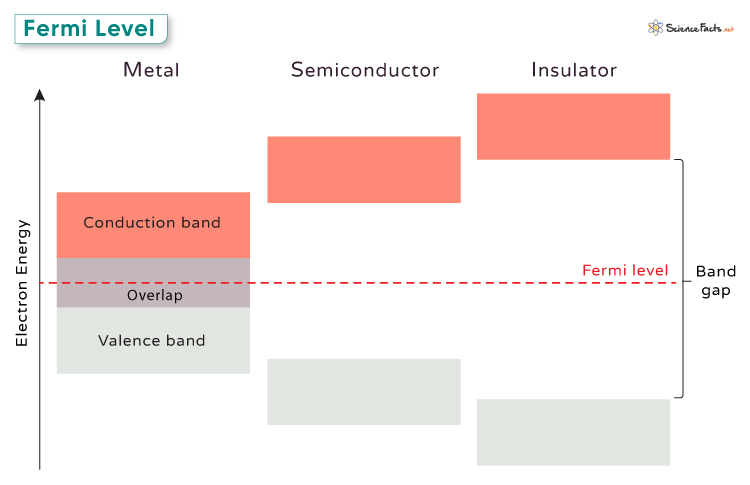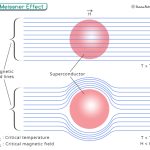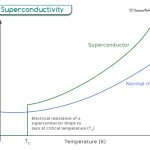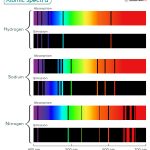Fermi Level
The Fermi level is a term used in condensed matter and semiconductor physics to define the energy reference point for the distribution of electrons in a material at thermal equilibrium. Named after Italian-American physicist Enrico Fermi, it represents the energy level at which the probability of finding an electron is 50% at absolute zero temperature. It defines the equilibrium between the probability of finding electrons in occupied and unoccupied states. The Fermi level is typically measured relative to the highest occupied energy level in the material, known as the valence band.
The terms “Fermi level” and “Fermi energy” are commonly confused, as they are frequently interchanged to describe one another.
Understanding Fermi Energy and Fermi Level
The Fermi energy denotes the highest kinetic energy retained by a free electron at nearly absolute zero temperature. The Fermi energy of a system is exclusively discernible at 0 K temperature. No electron can attain an energy surpassing the Fermi energy threshold. However, as the temperature rises above 0 K, the circumstances alter. Under these conditions, electrons extend beyond the Fermi energy spectrum and assume varied energy levels. It is here that Fermi level comes into the picture, which is the level where the maximum number of electrons exist. Thus, the Fermi level serves as a reference point for understanding the distribution of electrons in a material, particularly in determining the behavior of electrons near the top of the valence band or the bottom of the conduction band. (For details on valance and conduction bands, refer to our article on band theory). In conclusion, the Fermi level is a specific energy level within a material, while Fermi energy refers to the total energy of an electron at that Fermi level.
Fermi Level Equation
The Fermi level (EF) can be defined from the Fermi-Dirac distribution, which is:
\[ f(E) = \frac{1}{1 + e^{\frac{E – E_F}{k_B T}}} \]
Where:
- f(E) is the Fermi-Dirac distribution function, representing the probability of finding an electron with energy E.
- E is the energy of the electron.
- EF is the Fermi level.
- kB is Boltzmann’s constant.
- T is the temperature in Kelvin.
At thermal equilibrium, the Fermi level represents the energy level at which \( f(E) \) is 0.5 (50% probability).
Fermi Level in Metals, Semiconductors, and Insulators
In metals, the Fermi level lies within the conduction band, which is the band of energy levels that electrons can freely move through. Since the Fermi level is within this band, metals exhibit high electrical conductivity, as electrons are readily available for conduction. At absolute zero, all states up to the Fermi level are filled with electrons, and those above it are empty, creating a sharp boundary between filled and empty states.
In semiconductors, the position of the Fermi level depends on the doping level or the presence of impurities. In an intrinsic semiconductor (undoped), the Fermi level lies close to the middle of the band gap, the energy range between the valence band (where electrons are bound to atoms) and the conduction band. When doped with impurities, the Fermi level shifts either towards the conduction band (for n-type doping, which introduces extra electrons) or towards the valence band (for p-type doping, which introduces electron “holes” or vacancies in the electron structure). This movement of the Fermi level affects the conductivity of the semiconductor, allowing it to be used in electronic devices such as transistors and diodes.
In insulators, the Fermi level lies within the band gap, far from the energy bands where electrons can freely move. As a result, insulators have very low electrical conductivity since there are no available states for electrons to conduct through at the Fermi level. Instead, electrons are tightly bound to their respective atoms, requiring a significant amount of energy to transition into the conduction band.
-
References
Article was last reviewed on Friday, May 3, 2024








